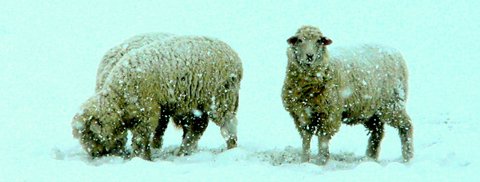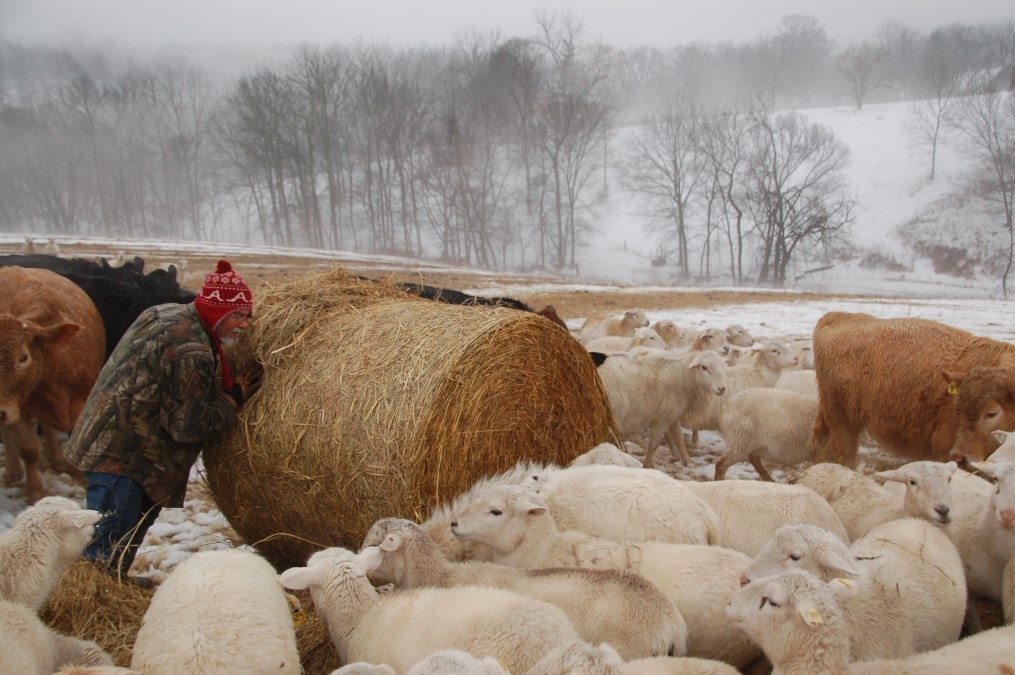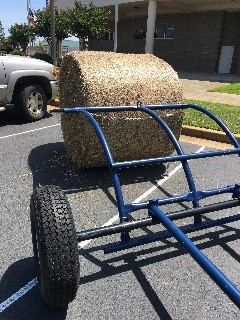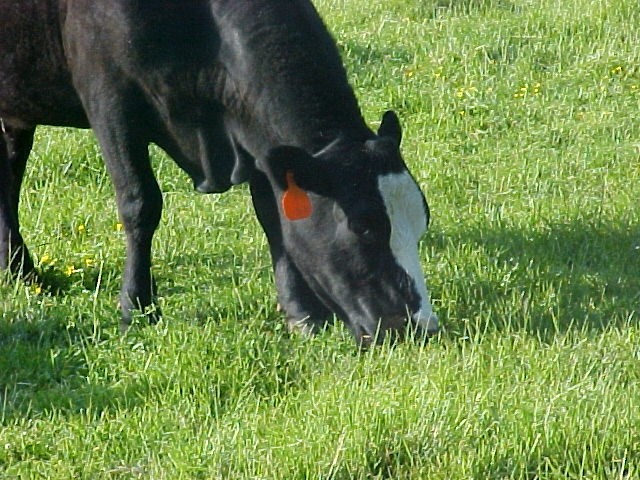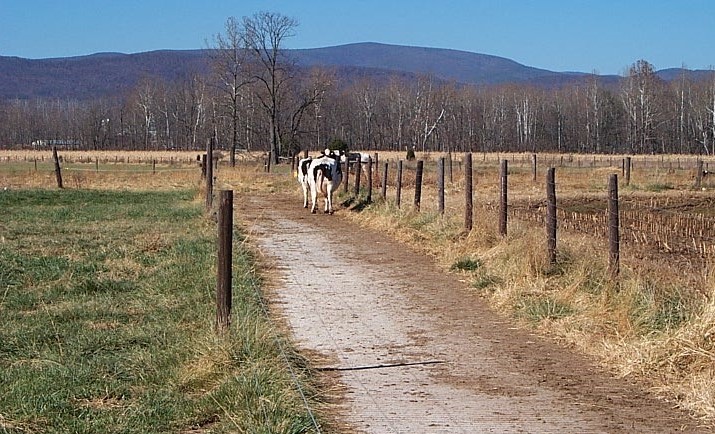Bale Grazing, is where you spread bales across a paddock in the fall or winter and move a temporary wire to allow access to more hay. Ideally you would move hay rings to control loss. Round rolls should be a minimum of 30’ apart and most likely you will need to seed the area after feeding so feeding them in somewhat of a straight line make reseeding easier. You can also creep bale graze allowing calves access to higher quality hay under a high electric wire.
Places not to feed: on the creek or other water areas unless you are trying to seal a pond. Don’t store hay or feed hay in the drip line of trees unless you are trying to control some weeds. Nutrients from the hay and manure are best spread across the pasture by the animals. Don’t feed on waterways unless it is already gullied and you have a plan to seed it soon after feeding. Also avoid feeding in depressions or near sinkholes.
Sacrifice areas, not many farms have good designated sacrifice areas. These areas are for use when pastures are grazed down to minimum recommended heights. I used to think it was ok to graze down to 2” height in winter but in order to optimize grass production maintain 3” or more height on pastures. Location of a sacrifice area: fence off an area that is high on the landscape centrally located (the hub of the operation) and an area that doesn’t have any sensitive areas like water bodies, drainageways or karst areas. If it does have sensitive areas NRCS recommends fencing those areas out. If sensitive areas are present it is best to have a 35’ wide or wider vegetative filter where water enters these areas. Single wire electric temporary fence can be used to accomplish all this.
Grazing management: Continue to feed hay into the spring till grass is 6-8” tall this will allow the grass to become stronger and set you up for grazing an extended time. Ideally some fall grown grass mixed with springs lush grass is best. If grass gets ahead of you in the spring defer grazing some fields till August, it is not likely to be high quality in August however it will return that biomass to the ground at a time when cool season grasses typically break dormancy allowing you to grow additional stockpiled grass for winter.
Manage minimum grazing heights of 3- 4” or higher for cool season grasses
Allow plants to recover growing to 8” or taller before re-grazing.
Additional management strategies:
- Limit exposure to hay to reduce consumption and waste however monitor cattle body condition score, much of the hay is low quality
- Unroll hay daily for more animal access and to distribute animal impact and manure where you desire
- Develop more paddocks to stretch forage supplies next year
- Plant warm season forage
- Stockpile grass as a reserve for drought and winter.
- UT Extension recommendations: http://utbeef.com/
Next month’s timely tips will be on frost seeding but if you need to order seed consider this:
Common recommendation:
Species up to pounds/acre
White clover 2
Red clover 4
Annual lespedeza 8 on less productive soil
Optional additions
Forage turnips 1
Arrowleaf clover 1
Hairy vetch 2 ideally sown in the fall but will improve diversity
Annual ryegrass 2 not recommended by university forage agronomist too competitive
Matua or Persister
Bromegrass 2 ideally sown in the fall but establishes easy particularly adapted to high fertility shady areas
